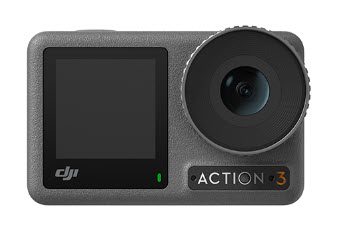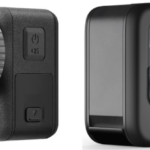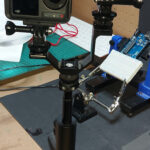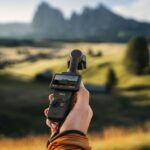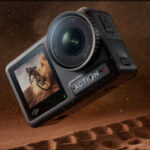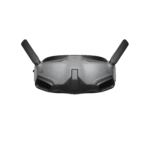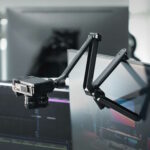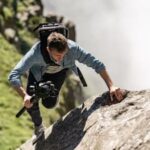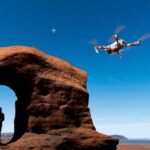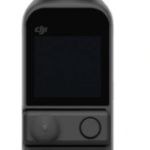Holden or Ford? Vegemite or Marmite? Dockers or West Coast Eagles? Sydney or Melbourne.
Rivalry between two entities has been around since, well, Cain and Abel I suppose. Sometimes friendly, often not, occasionally it is clear cut in terms of the preference offered to one over the other.
However, sometimes, although there are two similar entities, that preference is given without knowing the full details, capabilities or other factors about “the other”.
I think this is probably the case between GoPro cameras and DJI Osmo Action models.
I have every GoPro Black from the 6 onwards and used them all in various guises from the “action cam” they are basically designed to be to acting as studio cameras using the MediaMod add-on to enable HDMI compatibility with my Blackmagic Design ATEM Mini Pro for live streaming and recording.
Conversely, I have had a DJI Osmo Action Cam 1 for around 3 years or so and whilst it has been used, nowhere to the levels of my GoPros. There is no real reason for that other than it has just languished on the shelf. For those unaware, the DJI Osmo Action 1 is pretty much a clone of the GoPro 7 or so. It has the same form factor, same fixed “finger mounts” and roughly the same specifications.
The latest version of the Osmo Action series is the Model 3, but before I get to that, it is worth mentioning its predecessor, the Osmo Action 2 that came out around November 2021.
I did have the ability to have a play with one for a short period (the review is here). It is fair to say that the Osmo Action 2 was as far from a departure from the Action 1 / GoPro mould as a Lamborghini Guillardo is from a Lamborghini tractor. Instead of being a compact, ruggedised all-in-one unit, the Action 2 was modular with all the ‘bits’ – main body, battery / SD card container, external screen – clamping together via a magnetic system. It worked but was limiting under many circumstances, especially in the storage and waterproofing areas.
Technically, the Action 2 was superior to the GoPro range at the time, but the public it appears did not fall in love with the modular concept, and as far as I can tell, the Osmo Action 2 never really took off.
I suspect it might be safe to say the Osmo Action 2 was some DJI boffin’s extracurricular project that didn’t quite pan out commercially.
So, enter the Osmo Action 3, and this has returned to the original GoPro / Action 1 form factor of a single body and the familiar finger mounts.
As I mentioned last week, I am about to take a short sabbatical holidaying in Vanuatu, and this is going to allow the perfect scenario of a shootout between the GoPro Hero 11 Black and the Osmo Action 3.
For now, though, I’ll go over the details and specifications of the Osmo Action 3 to bring those unaware of this model up to speed.
Specifications
The heart of the Osmo Action 3 is a 1/1.7” CMOS sensor inside a fully waterproof body that can be taken without any external housing down to 16 metres which is almost as far as most recreational SCUBA divers are licenced to. For those who are more interested in the white stuff than the wet stuff, it’s also good for temperatures down to -20° C.
An optional housing is available to allow depths of up to 60 metres.
DJI has incorporated a colour temperature sensor into the design too aiding in colour accuracy, which is a nice touch.
The Osmo Action 3 records 4K/120fps footage with an ultrawide 155° FOV all in HDR for the best possible imagery and includes the new RockSteady 3.0 EIS and keeps your shots straight and stable with HorizonSteady.
Slow motion can be captured at up to 8x and still have support for 240 frames / second in full HD, so if you are a fan say, of those slo-mo Supercar shots, whilst you might not get to that level, it will be pretty damn good.
Vertical mode for the likes of TikTok is supported, as is voice control. There are two screens – one front and one rear and they are both touch enabled – and a built-in microphone system of course.
There is a wide range of photo and video modes available of course and these can be viewed here.
To show the experiment – if I might call it that – of the Action 2 did not go to waste, there is a range of accessories that use the magnetic technology DJI tried with the previous model.
One major advantage is the battery life; out of the box that battery for the Osmo Action 3 is said to last up to 160 minutes, a full 20 minutes + more than the equivalent GoPro, although of course you can invest in the GoPro Enduro batteries that extend the 9, 10 and 11 models’ life by a further 38%.
Another thing is that a majority of the add-ons available for the GoPro can be used by the Osmo Action 3, so apart from housings, any investment you already have in accessories is not lost.
Summary
The proof is in the pudding as they say, and I am looking forward to putting the DJI Osmo Action 3 through its paces and comparing it in situ with the GoPro Hero 11 Black.
Stay tuned.

